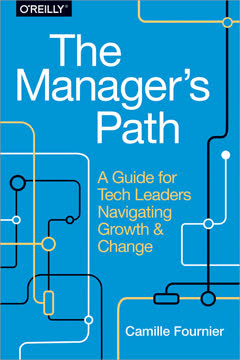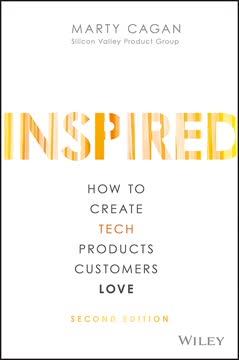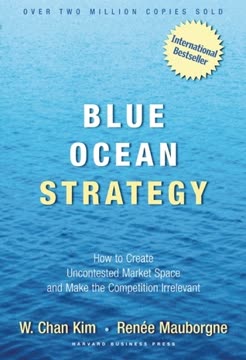Key Takeaways
1. Embrace Customer-Centricity in Every Interaction
Putting yourself in their shoes, and starting conversations always keeping this in mind.
Customer focus first. Effective customer engagement starts with a customer-centric methodology. This means genuinely understanding your customer's perspective, their role, industry, and specific challenges before initiating contact. Your preparation signals that you care, opening the door for meaningful interaction.
Beyond technology. Regardless of the communication channel used, the substance and delivery of your message remain paramount. Being a customer-centric professional involves showing up prepared, researching your customer thoroughly, and aligning your online and real-world presence to support their success. This foundation is critical for all sales activities.
Interactions build. Customer engagement is built by stringing together different forms of interaction into sequences. These sequences are applied across various sales stages like prospecting, winning, and growing accounts. Mastering these fundamental communication skills is essential for success throughout the customer journey.
2. Master Core Communication Skills: Listen, Ask, Understand
Active listening is mindfully listening to your customers, building on the response they are giving, and providing cues that show them that you’re actually comprehending what they are saying.
Listen actively. Effective communication involves more than just talking; it requires mastering skills like tone of voice, asking insightful questions, and truly listening. Active listening means paying attention, understanding, and showing the customer you are engaged through verbal, tonal, or visual cues. Avoid using their talking time to plan your next point.
Take diligent notes. Professionals take notes not just to remember facts, but to capture what was important to the customer, including their tone words. Your brain naturally filters for what's important to you, so external notes are crucial for retaining customer-centric details. Inform the customer you are taking notes to avoid awkward silences.
Elaborate and repeat. Show you are listening by elaborating on their points with genuine curiosity, digging deeper to understand their perspective. Repeat back what you've heard, often using their specific language or "tone words," to confirm understanding and build rapport. This "TALKER" framework (Tone, Ask, Listen, Keep notes, Elaborate, Repeat) is key.
3. Diagnose Needs with Situational, Pain, and Impact Questions
Question-based selling is simply the most powerful way to understand the customer’s real pains, if there is a critical event, and the impact it has on their business.
Control conversation flow. Use questions strategically to control both the speed and quality of the conversation. Closed-ended questions (yes/no, factual) are good for starting or confirming, while open-ended questions (why, how, what) encourage elaboration and speed up engagement once rapport is built. Learn to shift between these "gears."
Uncover the situation. Start with situational questions to understand the customer's current circumstances and qualify them. These questions gather facts but should be used thoughtfully (3-5 per call) and ideally framed conversationally, showing you've done your research. Avoid making it feel like an interrogation.
Identify pain and impact. Progress to pain questions to uncover challenges and priorities. Avoid clichés like "What keeps you up at night?" Instead, be specific and reference insights from peers or research. Crucially, follow up with impact questions to help the customer realize the consequences of their pain and the value of solving it. This links problems to bigger business issues and motivates action.
4. Craft Emails with Relevance, Reward, and a Clear Request (RRR)
The key to a great customer-centric email is providing value, and resisting the urge to sell.
Structure for success. Effective emails follow a structure designed to engage busy recipients: Relevance, Reward, and Request (RRR). Relevance shows you've researched them or their company. Reward offers something of value (insight, article, video). Request is a clear, situation-based call to action.
Personalization vs. Relevance. Don't confuse simply using a name with true relevance. Relevance comes from demonstrating research and referencing similar situations, companies, or industries that matter to them. Avoid starting with "I" statements; make it about the customer ("You").
Keep it concise. Emails should be short, ideally optimized for mobile. Avoid attachments; use links instead. Offer valuable insights, not just product features. Use the customer's first name before the request to draw attention. Test subject lines and sending times to maximize engagement (open and click-through rates).
5. Turn Cold Calls into Warm Conversations (WARM)
What we are saying is that you should always try to make your phone call WARM, not COLD.
Preparation makes it warm. A truly "cold" call means you know nothing about the person. To make calls "WARM," prepare beforehand by sending an insight, researching their online profiles (LinkedIn, Twitter), and understanding their potential problems. This allows you to open the call with relevance.
Address confusion (W). Start the call energetically by immediately addressing the customer's likely questions: Who are you? Why are you calling me? What's in it for me (WIIFM)? This sets a clear context and manages expectations from the outset.
Ask, be relevant, make it happen (ARM). Instead of pitching, Ask questions with context derived from your research (A). Establish Relevance by linking your questions to their specific situation, company, or industry (R). Finally, Make it happen for the customer (M) by offering value – insights, a case study, an invitation – making their life easier and inviting further engagement.
6. Build Relationships Through Strategic Social Engagement
Best way to use LinkedIn is to sincerely build a network of similarly minded professionals with whom you are sharing best practices.
Social is a team sport. In modern B2B sales, decisions involve multiple stakeholders. Socializing helps you understand and engage with this team throughout the sales cycle, from initial awareness to adoption. It's a 24/7, asynchronous way to build relationships.
Listen and visit. Use social platforms to listen to what your market and customers are discussing. Visit profiles of target contacts daily to build awareness (they see you visited). If they visit back, consider reaching out, but only if your own profile is professional and ready.
Engage passively and actively. Passive engagement includes following, liking, commenting, endorsing, or resharing content – gentle nudges that show you care. Active engagement involves direct messages or mentions. When commenting, provide genuine insights or relate experiences using the PARLA framework (Problem, Action, Result, Learn, Apply), but avoid selling your product directly unless asked.
7. Communicate Instantly and Concisely with Messaging
Messaging is a short-form, instant, real-time communication that has been growing in popularity as people start to become burdened with too many emails.
Short, instant, real-time. Messaging tools (Slack, Intercom, SMS, etc.) cater to the modern preference for quick, to-the-point communication. Unlike email, messaging is often real-time, requiring rapid back-and-forth and concise language, sometimes using abbreviations or emojis.
Different tools, different uses. Understand the context of each messaging tool. Live chat on a website requires immediate responses, while LinkedIn messages might be checked less frequently. Older messages on platforms like Slack or Twitter can quickly get buried.
Structure real-time interactions. When using real-time messaging, especially on a website chat, follow a structure: Answer their question first ("give to get"). Introduce yourself (humanize with a picture/emoji). Establish rapport. Diagnose their situation with questions. Provide value (link to resource). Then, and only then, prescribe a solution or suggest next steps like a meeting with an expert.
8. Structure Meetings for Maximum Progress (ACE)
The magic of ACE is that you set yourself up for success.
Meeting hygiene matters. Every customer meeting, regardless of purpose (discovery, demo, proposal), requires careful management. This includes scheduling efficiently, sending quality invitations that create brand awareness and provide value (links, not attachments), and thorough preparation on attendees and company context.
Confirm and prepare. Confirm meetings with reminders (24/48 hours and 5 minutes prior), including relevant articles or resources. For multi-person calls, have a "call before the call" with your champion to understand attendees' roles and goals. Prepare your technology, research, and be ready a few minutes early.
Open with ACE. Start every meeting by setting expectations using the ACE framework: Appreciate them joining, Confirm the end time, and state the End Goal for the call. This takes under a minute, shows professionalism, and ensures alignment. Follow up by asking each attendee what they hope to accomplish, prioritizing topics, and agreeing on clear next steps before the confirmed end time.
Last updated:
Review Summary
The SaaS Sales Method receives mostly positive reviews, with readers praising its practical approach, actionable insights, and concise content. Many appreciate the book's focus on structuring sales processes and improving techniques specific to SaaS businesses. Reviewers highlight the book's clarity, informative nature, and lack of unnecessary content. Some readers note its applicability beyond SaaS companies. A few criticisms mention grammar issues and overuse of jargon. Overall, the book is highly recommended for sales leaders and professionals in the SaaS industry.
Similar Books








Download PDF
Download EPUB
.epub digital book format is ideal for reading ebooks on phones, tablets, and e-readers.





